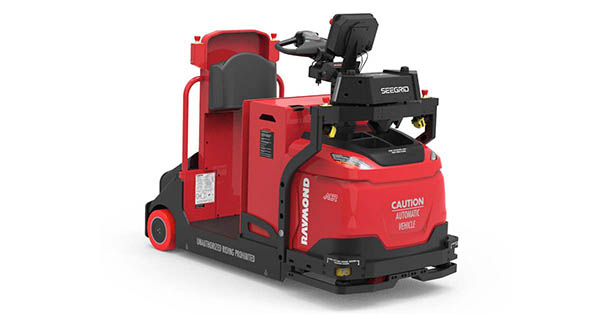Alabama Autonomous Guided Vehicle Supplier
What is an AGV?
Often described as self-guided vehicles or automatic guided vehicles, automated guided vehicles (AGVs) are material handling systems or payload carriers that move autonomously throughout the ground surfaces of a warehouse, DC or production facility without an onboard driver.
What are Automated Guided Vehicles used for?
Common AGV applications include retrieval and storage in warehouses and DCs, normally in support of order picking. They are additionally put to use for transport of basic materials, work-in-process and finished products in production facilities.
What are the primary advantages of Self-Guided Vehicles?
- Minimized Labor Costs: AGVs can considerably reduce labor expenses. A one-time expense can remove the ongoing costs of wages, taxes and benefits related to a full-time employee.
- Increased Safety: Modern AGVs utilize advanced cameras, lasers or other sensing units that permit them to "see" and respond to their surroundings very quickly. Humans can get tired or distracted, whereas machines do not. AGVs can likewise be used in severe conditions or around dangerous materials where personal security is compromised.
- Increased Productivity & Accuracy: AGVs can work 24/7, never needing breaks or getting fatigued. They can make repeated treks across a large building effortlessly. They likewise don't make the types of mistakes that human workers are prone to making.
- Modularity: Most AGV solutions can be implemented slowly, replacing a handful of workers incrementally without a huge expenditure up front. As automation requirements accelerate, more AGVs can quickly be added to the system.
How do AGVs work?
AGVs are shepherded by a mix of sensor-based guidance systems and computer programs. They can navigate safely through a warehouse or manufacturing facility by utilizing obstacle detection bumpers and following carefully defined paths while using precisely regulated acceleration and deceleration.
AGV navigation is generally supervised by one of these types of systems:
- Vision guidance: Cameras capture the AGV's surroundings, and the vehicles use these cataloged images to plot a course. Vision guidance is standalone, meaning no modification is required to a warehouse or factory infrastructure for this kind of navigation.
- Laser target navigation: With laser-based equipment, reflective tape is attached to pallet racks, wall surfaces, posts and other stationary items. AGVs utilize laser transmitters to rebound light off of these reflectors and then use the distance and angle of items to find a path.
- LiDAR: LiDAR solutions transmit laser pulses to determine the range around the AGV and objects in its vicinity. This information is utilized to develop a comprehensive map of the setting. Like vision guidance, no modification of a facility is needed.
- Inertial navigation: Transponders implanted into a building's flooring guide AGVs along a defined course.
- Wired navigation: These systems utilize wire tracks embedded into a warehouse or factory floor surface. The wire sends a signal that an AGV recognizes by means of a sensor or antenna system.
- Magnetic guide tape: This style of AGV makes use of magnetic sensors and conforms to a path laid out by magnetic tape.
What are the different kinds of Autonomous Guided Vehicles?
There are numerous types of automated guided vehicles. Lots of AGVs resemble other human-operated vehicles yet are designed to maneuver with no continuous human intervention or guidance.
- Forklift AGVs: Forklift automated guided vehicles are an often-used kind of AGV in warehouses. They're built to transfer pallets without the supervision of a human operator.
- Automated Guided Carts: An automatic guided cart is the most fundamental type of AGV. They can move all kinds of products from entire pallets to small components. AGCs are often utilized in stocking, sorting and cross-docking applications.
- Tugger AGVs: Towing or "tugger" AGVs pull unpowered, payload-carrying carts behind them in a train-like configuration. These kinds of automated guided vehicles are often utilized for moving heavy loads over long ranges. Many times, they are programmed to make multiple stops along their course.
- Unit Load Handlers: Unit load handlers ferry individual payloads like specific items or a discrete pallet or tote.
- Heavy Burden Carriers: These are utilized for exceptionally heavy loads like plates, castings or coils.
Automated Guided Vehicle Supplier Near Me
If you'd like a complete analysis of AGV possibilities for your warehouse, DC or production center, you can talk to an expert at Carolina Handling.
-
-
Proudly serving
Birmingham, Huntsville,
Tuscaloosa, Montgomery,
Hoover, Madison,
Tuscaloosa, Auburn,
and the entire State of Alabama.
You May Also Like:
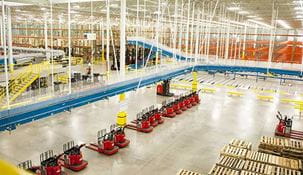
Automation
Carolina Handling can help you automate every aspect of your warehouse operation to increase efficiency.
Learn More
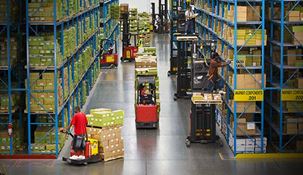
Optimization
Optimize everything in your warehouse to improve productivity and reduce operating costs.
Learn More
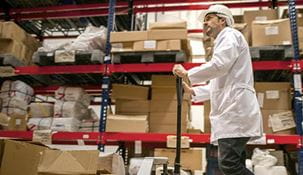
Warehouse Products
Looking for the right product for your operation? We have everything you need to do business in stock.
Learn More
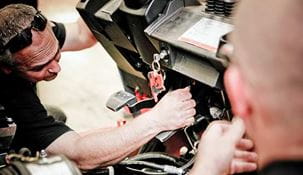
Service Maintenance
Providing superior lift truck service and maintenance for our customers is Carolina Handling's highest priority.
Learn More


